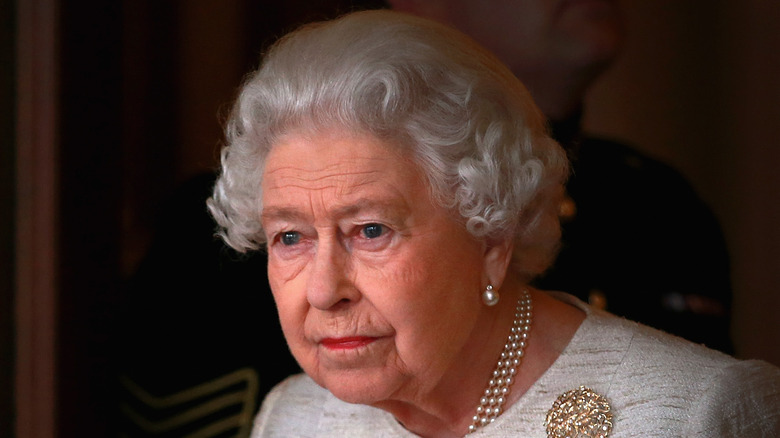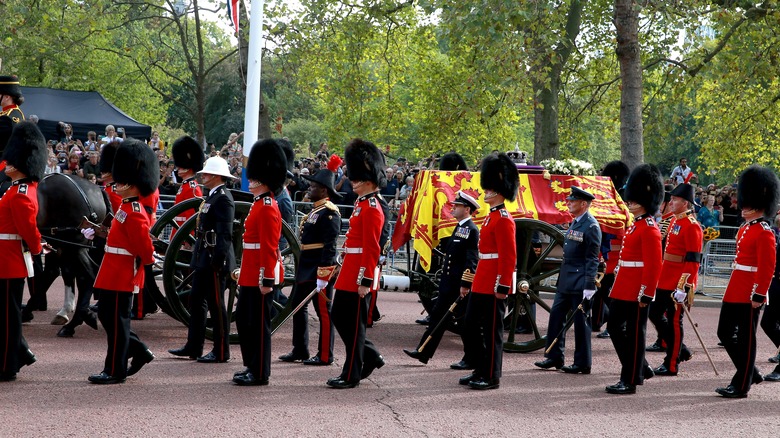Why The Queen's Funeral Soon May Not Look The Same
A handful of footage regarding Queen Elizabeth II's funeral was removed from public circulation, but why, and where does this lead next? A week after Her Royal Highness passed away, The Palace of Westminster welcomed the public to view her lying-in-state on September 14. The queue to see Her Majesty's coffin spanned almost 5 miles long in just two days, with officials keeping its length to a maximum of 10 miles. While everyone, including tourists, was invited to view The Queen's coffin during that period, there were certain conditions guests were expected to adhere to.
That means attendees were prohibited from taking selfies or using any mobile devices upon entering the Royal Palace. This makes comprehensive public coverage quite limited to select official broadcasting networks, such as the BBC, ITV, and Sky News, to name a few. The same limited coverage applied during Her Majesty's state funeral on September 19. However, it seems like restrictions not only applied during the funeral in real time but also to media footage that has already been publicized as well.
The royal family have spoken
BBC covered a lengthy live stream capturing The Queen's lying-in-state all the way to her funeral. Now, it seems like it's become among the news outlets, along with ITV, and Sky News, that has been reportedly told by members of the Royal staff to exclude footage within certain timestamps from their future television and social media broadcasts, according to The Guardian. The footage in question involved five "relatively brief" clips of the royal family during the ceremony. Raw footage of the Queen's funeral will remain untouched on streaming services for only a month, as Buckingham Palace will reportedly be in talks with the British media on which parts of the video they're allowed to broadcast moving forward. Apparently, restrictions also extended to the medium being used, as well as how it's presented.
For instance, news outlets were prohibited from live-streaming parts of the funeral on TikTok, while broadcasters were told all media coverage couldn't be used in entertainment shows. Sure, maintaining respectful coverage sounds reasonable given the circumstances, but having particular parts of the procession omitted from future broadcasts after the fact can be perplexing for some. This brings the question of whether journalists and viewers alike might soon see the Queen's funeral being portrayed as something that's quite different from what they remembered. Whether or not this could serve as means for the royal family to dictate the media's future narrative on the matter remains to be seen.

